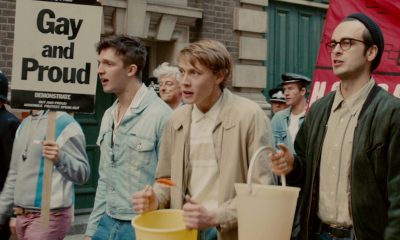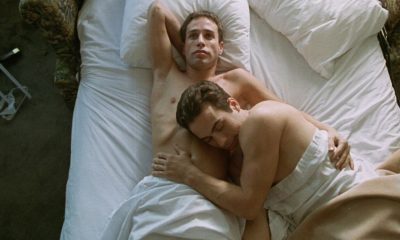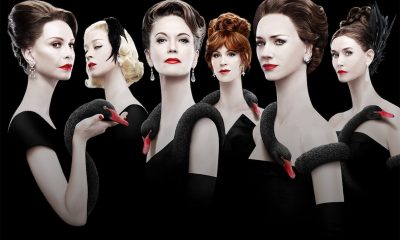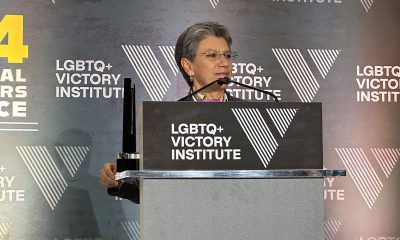a&e features
Gus Van Sant on his new recovery movie ‘Don’t Worry, He Won’t Get That Far on Foot’
Out director reunited with Joaquin Phoenix for Amazon Prime movie, originally a Robin Williams vehicle

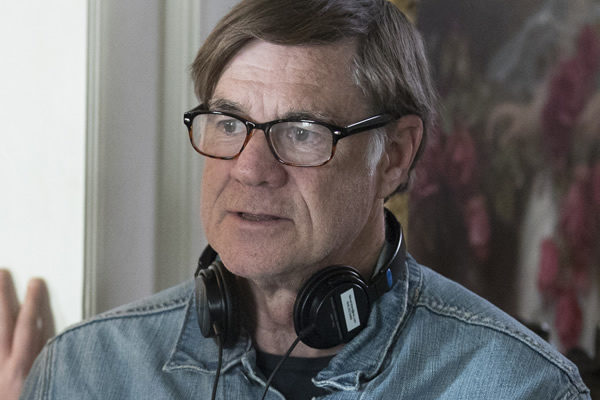
Despite a long and distinguished career as a writer and director, out filmmaker Gus Van Sant remains somewhat of a Hollywood enigma.
He’s been openly gay for decades, yet remains a little reclusive and guards his private life carefully. He didn’t start making movies (and didn’t come out) until his 30s. Unlike other LGBT celebrities in Hollywood, he says his coming out probably didn’t have a big impact on his career.
“I don’t know, actually,” Van Sant says in a Blade phone interview. “You can never really tell. I’m sure it has affected some things, but none that I can see.”
Van Sant’s sexuality also does not seem to have directly impacted his work as a filmmaker.
“I’ve done lots of different types of stories,” he says.
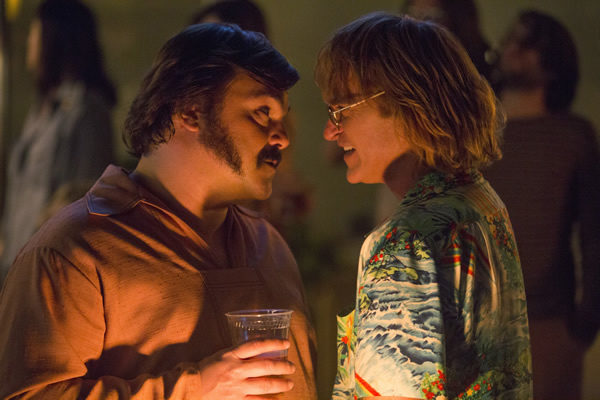
While he’s often cited as one of the founders of the New Queer Cinema movement, not all of his movies have LGBT characters or themes.
While certain themes (alienation, isolation and unrequited love) and character types (loners, hustlers and thieves) keep popping up in his work, his movies have covered a dizzying array of subjects and styles. They range from mainstream Oscar contenders like “Milk,” “Finding Forrester” and “Good Will Hunting” to indies and cult classics like “To Die For,” “Drugstore Cowboy” and “My Own Private Idaho,” and to esoteric art house fare like “Promised Land” and “The Sea of Trees” that were openly jeered when they opened at European festivals like Cannes.
Despite some bankable stars and funding from Amazon Studios, Van Sant’s latest movie, “Don’t Worry, He Won’t Get Far On Foot,” now available on Amazon Prime, seems destined to be one of his cult classics. When the movie was released last summer, it received positive reviews, but failed to find an audience in a crowded release schedule.
“Don’t Worry” is based on the memoir of the same name by quadriplegic cartoonist John Callahan (1951-2010). Callahan became a quadriplegic at the age of 21 as the result of a car accident following a night of bar hopping. Callahan’s friend, who was driving, walked away without a scratch. Callahan would never walk again.
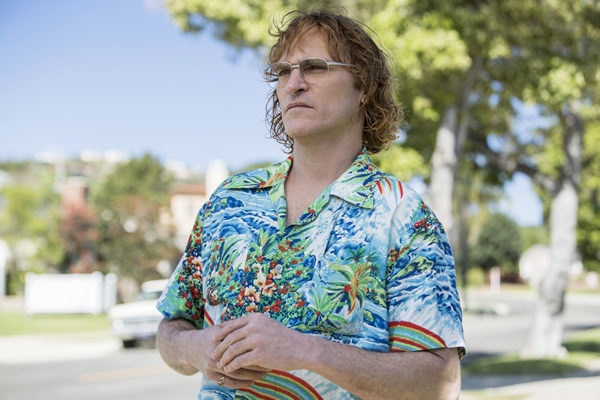
After years of AA meetings and physical therapy, Callahan became sober and gained partial use of his arms. He learned to draw by holding a pen between both hands. His sense of humor was very dark and his drawing was often rough and simple; his work is reminiscent of artists like Gahan Wilson, Charles Addams, William Steig and James Thurber. His cartoons were published by the Willamette Week newspaper in Portland, Ore., and often resulted in boycotts and protests against the paper.
Van Sant became aware of Callahan’s memoir through his friend Robin Williams who played the wily therapist in “Good Will Hunting” (1997).
“Robin Williams had optioned the book and wanted to play John Callahan,” Van Sant says. “In the ’90s, I developed a couple of screenplays for him, but by the time a final script was ready, he chose to do other projects.”
Van Sant is not sure why Williams never played Callahan.
“Possibly he thought this one was too risky. Thinking of his career, he needed to play it safe. Or he might not have liked the script. Or he might not have known how to approach the character.”
After Williams’ tragic suicide in 2014, Van Sant returned to Callahan’s story.
“I started over after Robin’s death. The original script was focused on Callahan’s search for his lost mother. He had a lifelong obsession with finding her (and) would drive around looking for her.”
All he knew about her was that she was a red-haired Irish Catholic schoolteacher who gave him up for adoption when he was born. Callahan did discover her name, but never located her.
Van Sant refocused the story on Callahan’s efforts to reclaim his life after the accident.
“It’s an alcohol recovery movie,” he says. “I tried to match up some of the ideas of the Twelve Steps to things that happened in his life.”
The final script tells Callahan’s redemption story in a fluid non-linear fashion that freely moves back and forth between his life before and after the accident.
“I tried to keep things logically and thematically connected so that audiences wouldn’t get lost,” the filmmaker says.
Van Sant also decided to highlight the character of Donny, the openly gay man who was Callahan’s AA sponsor. The deep friendship between a straight man and a gay man, free of sexual tension, is something not often seen in mainstream movies.
“According to Callahan’s book,” Van Sant says, “John really credited him with saving his life. Donny was a gay man in Portland, Oregon from a wealthy family. We couldn’t locate his family, but we know he died in 1985 or so. He’s sort of lost to history.”
To play the challenging role of John Callahan, Van Sant turned to his old friend Joaquin Phoenix. Van Sant had directed Phoenix in his break-out role of the delightfully dim-witted Jimmy Emmett in “To Die For” (1995). A close friend of the Phoenix family, Van Sant had also directed Joaquin’s brother River in “My Own Private Idaho” (1991) and sister Rain in “Even Cowgirls Get the Blues” (1993).
Joaquin Phoenix had started his Hollywood career as a child actor with appearances in “Murder, She Wrote,” “Hill Street Blues” and other television series, including an ABC Afterschool Special.
“He had also made some movies when he was younger, most notably ‘Parenthood’ and ‘Space Camp,’ but after that he decided to quit acting. By the time I worked with him, he was 20 and newly coming back to acting.”
“To Die For” was a success for both star and director, but Van Sant and Phoenix didn’t get the chance to work together again until “Don’t Worry, He Won’t Get Far On Foot.”
“It was over 20 years between our movies together,” Van Sant says. “By then he had done so many giant things in different movies. He was a very outstanding, developed actor.”
Working together again was interesting, Van Sant says, “because he was way more experienced and yet he was still somebody I knew as a friend. It was sometimes funny.”
Van Sant rounded out the cast of “Don’t Worry …,” with a combination of rising stars and Hollywood veterans. He cast Jonah Hill in the pivotal role of Callahan’s sponsor Donny. Rooney Mara (“Carol”) plays Callahan’s girlfriend Annu; Carrie Brownstein (“Portlandia”) is Callahan’s frustrated caseworker; and Jack Black is Dexter, the drunk driver who was behind the wheel when Callahan suffered his life-changing injuries.
There are also delightful performances from the members of Callahan’s support group, including Beth Ditto, Udo Kier, Kim Webber, Mark Gordon and especially Ronnie Adrian as Martingale, a gay artist who recites his poetry about penises.
After watching “Don’t Worry, He Won’t Get Far On Foot” on Amazon Prime, it may be time to schedule a Gus Van Sant retrospective.
Every LGBT movie fan should see “Milk,” the rousing and insightful biopic of assassinated gay rights activist Harvey Milk. Star Sean Penn and screenwriter Dustin Lance Black won Oscars for their work. Van Sant was nominated for Best Director and the film was nominated for Best Picture.
After that, a Van Sant retrospective is a matter of personal taste.
In the mainstream mode, there’s “Good Will Hunting” which introduced Van Sant to Robin Williams, who won an Oscar for his bravura performance, and made stars of newcomers Matt Damon and Ben Affleck, who won Oscars for their screenplay. Van Sant was nominated for Best Director but did not win.
The delightfully campy thriller “To Die For” helped introduce American audiences to Nicole Kidman, She plays an aspiring television personality who enlists two hormonal teens (Joaquin Phoenix and Matt Dillon) to help her in her schemes. The final image of Kidman is a haunting one.
Loosely based on Shakespeare’s “Henry IV,” the queer classic “My Own Private Idaho” stars Keanu Reeves and River Phoenix as hustlers struggling to survive on the streets of Portland (Van Sant’s adopted hometown and a frequent setting for his movies).
The Van Sant retrospective can include some of the music videos he’s directed for artists like the Red Hot Chili Peppers, Elton John, Tracy Chapman, Chris Isaak, k.d. lang and some of the Beat Poets.
What’s next? Van Sant says he’s “working on a screenplay, but there’s nothing ready to shoot yet.”

a&e features
Queer highlights of the 2026 Critics Choice Awards: Aunt Gladys, that ‘Heated Rivalry’ shoutout and more
Amy Madigan’s win in the supporting actress category puts her in serious contention to win the Oscar for ‘Weapons’

From Chelsea Handler shouting out Heated Rivalry in her opening monologue to Amy Madigan proving that horror performances can (and should) be taken seriously, the Critics Choice Awards provided plenty of iconic moments for queer movie fans to celebrate on the long road to Oscar night.
Handler kicked off the ceremony by recapping the biggest moments in pop culture last year, from Wicked: For Good to Sinners. She also made room to joke about the surprise hit TV sensation on everyone’s minds: “Shoutout to Heated Rivalry. Everyone loves it! Gay men love it, women love it, straight men who say they aren’t gay but work out at Equinox love it!”
The back-to-back wins for Jacob Elordi in Frankenstein and Amy Madigan in Weapons are notable, given the horror bias that awards voters typically have. Aunt Gladys instantly became a pop culture phenomenon within the LGBTQ+ community when Zach Cregger’s hit horror comedy released in August, but the thought that Madigan could be a serious awards contender for such a fun, out-there performance seemed improbable to most months ago. Now, considering the sheer amount of critics’ attention she’s received over the past month, there’s no denying she’s in the running for the Oscar.
“I really wasn’t expecting all of this because I thought people would like the movie, and I thought people would dig Gladys, but you love Gladys! I mean, it’s crazy,” Madigan said during her acceptance speech. “I get [sent] makeup tutorials and paintings. I even got one weird thing about how she’s a sex icon also, which I didn’t go too deep into that one.”
Over on the TV side, Rhea Seehorn won in the incredibly competitive best actress in a drama series category for her acclaimed performance as Carol in Pluribus, beating out the likes of Emmy winner Britt Lower for Severance, Carrie Coon for The White Lotus, and Bella Ramsey for The Last of Us. Pluribus, which was created by Breaking Bad’s showrunner Vince Gilligan, has been celebrated by audiences for its rich exploration of queer trauma and conversion therapy.
Jean Smart was Hack’s only win of the night, as Hannah Einbinder couldn’t repeat her Emmy victory in the supporting actress in a comedy series category against Janelle James, who nabbed a trophy for Abbott Elementary. Hacks lost the best comedy series award to The Studio, as it did at the Emmys in September. And in the limited series category, Erin Doherty repeated her Emmy success in supporting actress, joining in yet another Adolescence awards sweep.
As Oscar fans speculate on what these Critics Choice wins mean for future ceremonies, we have next week’s Golden Globes ceremony to look forward to on Jan. 11.
a&e features
Looking back at the 10 biggest A&E stories of 2025
‘Wicked,’ Lady Gaga’s new era, ‘Sexy’ Bailey and more

Although 2025 was a year marked by countless attacks on trans rights and political setbacks, the year also saw brilliant queer artists continuing to create art. From Cannes and Sundance Award winners now vying for Oscar consideration to pop icons entering new stages of their careers, queer people persevered to tell their stories through different media.
With the state of the world so uncertain, perhaps there’s no more vital time to celebrate our wins, as seen through some of this year’s top pop culture moments. While there’s no collection of 10 stories that fully encompass “the most important” news, here are some events that got the gays going:
10. ‘Mysterious Gaze of the Flamingo’ wins big at Cannes

The Cannes Film Festival has become a crucial start for films hoping to make their way to the Oscars, and first-time director Diego Céspedes won the top Un Certain Regard prize for his intimate western “The Mysterious Gaze of the Flamingo.” The film is set in the ‘80s and is intended as an allegory for the AIDS epidemic. Seeing a film that unpacks vital queer history win one of the most coveted awards at Cannes has been a huge point of pride in the independent filmmaking community.
Since the film bowed at Cannes, it has been selected as Chile’s Oscar entry in the Best International Feature race. Speaking with The Blade during the film’s AFI Fest run in October, Céspedes said: At first, I was kind of scared to have this campaign position in the times that we’re living [in] here. But at the same time, I think the Oscars mean a huge platform — a huge platform for art and politics.”
9. ‘The Last of Us’ returns for an even gayer season 2
While the first season of The Last of Us gave us one of TV’s most heartbreaking queer love stories in the episode “Long, Long Time,” Season 2 doubled down on its commitment to queer storytelling with the blossoming relationship between Ellie (Bella Ramsey) and Dina (Isabela Merced). The show expanded on the pair’s relationship in the original video game, making it perhaps the central dynamic to the entire season. That unfortunately came with more homophobic backlash on the internet, but those who checked out all the episodes saw a tender relationship form amid the show’s post-apocalyptic, often violent backdrop. For their performance, Ramsey was once again nominated for an Emmy, but Merced deserved just as much awards attention.
8. ‘Emilia Pérez’ sparks controversy
Jacques Audiard’s genre-bending trans musical “Emilia Pérez” proved to be an awards season juggernaut this time last year, winning the Golden Globe for Best Musical/Comedy. But when the lead star Karla Sofia Gascón’s racist, sexist, and homophobic old tweets resurfaced, the film’s Oscar campaign became a tough sell, especially after Netflix had tried so hard to sell Emilia Pérez as the “progressive” film to vote for. Mind you, the film had already received significant backlash from LGBTQ+ audiences and the Mexican community for its stereotypical and reductive portrayals, but the Gascón controversy made what was originally just social media backlash impossible to ignore. The only person who seemed to come out of the whole debacle unscathed was Zoe Saldaña, who won the Oscar for Best Supporting Actress over Ariana Grande.
7. ‘Sorry, Baby’ establishes Eva Victor as major talent
Back in January at the Sundance Film Festival, Eva Victor (known by many for her brand of sketch comedy) premiered their directorial debut “Sorry, Baby” to rave reviews, even winning the Waldo Salt Screening Award. Victor shadowed Jane Schoenbrun on the set of “I Saw the TV Glow,” and seeing Victor come into their own and establish such a strong voice immediately made them one of independent cinema’s most exciting new voices. A memorable scene in the film sees the main character, Agnes (played by Victor), struggling to check a box for male or female, just one example of how naturally queerness is woven into the fabric of the story.
Most recently, Victor was nominated for a Golden Globe for her performance in the film, and she’s represented in a category alongside Jennifer Lawrence (“Die My Love”), Jessie Buckley (“Hamnet”), Julia Roberts (“After the Hunt”), Renate Reinsve (“Sentimental Value”) and Tessa Thompson (“Hedda”). The film also received four Independent Spirit Award nominations overall.
6. Paul Reubens comes out in posthumous doc

While Paul Reubens never publicly came out as gay before passing away in 2023, the two-part documentary “Pee-wee as Himself” premiered back in May on HBO Max, giving the legendary comedian a chance to posthumously open up to the world. Directed by Matt Wolf, the documentary explores how Reubens found his alter ego Pee-Wee Herman and why he kept his private life private.
The documentary won an Emmy in the Outstanding Documentary or Nonfiction Special category and remains one of the most critically acclaimed titles of the year with a 100% Rotten Tomatoes score. Also worth noting, the National Geographic documentary Sally told the posthumous coming out story of Sally Ride through the help of her long-time partner, Tam O’Shaughnessy.
5. Lady Gaga releases ‘Mayhem’
Lady Gaga entered a new phase of her musical career with the release of Mayhem, her seventh album to date. From the frenzy-inducing pop hit Abracadabra to the memorable Bruno Mars duet featured on “Die With a Smile,” seeing Gaga return to her roots and make an album for the most die-hard of fans was especially rewarding after the underwhelming film releases of “House of Gucci” and “Joker: Folie à Deux.” Gaga has been touring with The Mayhem Ball since July, her first arena tour since 2018. She even extended her tour into 2026 with more North American dates, so the party isn’t stopping anytime soon. And Gaga is even set to make an appearance next May in “The Devil Wears Prada 2.”
4. Cynthia Erivo, Ariana Grande perform at the Oscars

While “Wicked: For Good” didn’t quite reach the heights of the first film, we will forever have Cynthia Erivo and Ariana Grande’s breathtaking live performance that opened the 97th Academy Awards. The pair sang a rendition of “Over the Rainbow,” “Home,” and “Defying Gravity,” paying proper homage to the original 1939 “Wizard of Oz.” Even non-Wicked fans can’t deny how magical and brilliantly staged this performance was. With both Erivo and Grande up for acting Oscars last year, they’re hoping to repeat success and make history with consecutive nominations. Either way, let’s hope there’s another live performance in the making, especially with two new original songs (The Girl in the Bubble and No Place Like Home) in the mix.
3. Indya Moore speaks out against Ryan Murphy
Indya Moore has consistently used social media as a platform for activism, and in September, posted a 30-minute Instagram live speaking out against “Pose” co-creator Ryan Murphy. Moore claimed that Murphy wasn’t being a true activist for trans people. “Ryan Murphy, we need you to do more. You need to address the racism, the violence, and the targeting of people on your productions, Ryan Murphy. You do need to make sure trans people are paid equally. Yes, Janet did the right thing,” Moore said. Murphy was also back in the headlines this year for the critically panned “All’s Fair” and the controversial “Monster: The Ed Gein Story” starring Laurie Metcalf and Charlie Hunnam.
2. Cole Escola wins Tony for Best Leading Actor
Few pop culture moments this year brought us together more than Cole Escola winning a Tony award for “Oh, Mary!” the Broadway show they created, wrote and starred in (we love a triple threat!) Escola made history by becoming the first nonbinary person to win a Tony in the leading actor category, and seeing them excitedly rush to the stage wearing a Bernadette Peters-inspired gown instantly became a viral social media moment.
The cherry on top of Escola’s major moment is the recent news that they are writing a Miss Piggy movie with Jennifer Lawrence and Emma Stone producing — news that also broke the internet for the better. We cannot wait!
1. Jonathan Bailey makes gay history as ‘Sexiest Man Alive’

The same year as his on-screen roles in blockbusters “Jurassic World Rebirth” and “Wicked: For Good,” Jonathan Bailey made history as the first openly gay man to be named People magazine’s “Sexiest Man Alive.” The fact that it took 40 years for an openly gay man to earn the title is a signifier of how far we still have to go with queer representation, and seeing Bailey celebrated is just one small step in the right direction.
“There’s so many people that want to do brilliant stuff who feel like they can’t,” he told PEOPLE, “and I know the LGBT sector is under immense threat at the moment. So it’s been amazing to meet people who have the expertise and see potential that I could have only dreamed of.” In 2024, Bailey founded the charity titled The Shameless Fund, which raises money for LGBTQ+ organizations.
a&e features
Your guide to D.C.’s queer New Year’s Eve parties
Ring in 2026 with drag, leather, Champagne, and more

With Christmas in the rear view mirror, we can turn our attention to ringing in a much-anticipated New Year with a slew of local LGBTQ parties. Here’s what’s on tap.
Pitchers
This spacious Adams Morgan bar is hosting the “Pitchers’ Perfect New Year’s Eve.” There will be a midnight Champagne toast, the ball drop on the big screens, and no cover, all night long. The bar doesn’t close until 4 a.m., and the kitchen will be open late (though not until close). All five floors will be open for the party, and party favors are promised.
Trade
D.C.’s hottest bar/club combo is leaning into the Shark motif with its NYE party, “Feeding Frenzy.” The party is a “glitterati-infused Naughty-cal New Year’s Even in the Shark Tank, where the boats are churning and the sharks are circling.” Trade also boasts no cover charge, with doors opening at 5 p.m. and the aforementioned Shark Tank opening at 9 p.m.. Four DJs will be spread across the two spaces; midnight hostess is played by Vagenesis and the two sea sirens sensuously calling are Anathema and Justin Williams.
Number Nine
While Trade will have two DJs as part of one party, Number Nine will host two separate parties, one on each floor. The first floor is classic Number Nine, a more casual-style event with the countdown on TVs and a Champagne midnight toast. There will be no cover and doors open at 5 p.m. Upstairs will be hosted by Capital Sapphics for its second annual NYE gathering. Tickets (about $50) include a midnight Champagne toast, curated drink menu, sapphic DJ set by Rijak, and tarot readings by Yooji.
Crush
Crush will kick off NYE with a free drag bingo at 8 p.m. for the early birds. Post-bingo, there will be a cover for the rest of the evening, featuring two DJs. The cover ($20 limited pre-sale that includes line skip until 11 p.m.; $25 at the door after 9 p.m.) includes one free N/A or Crush, a Champagne toast, and party favors (“the legal kind”). More details on Eventbrite.
Bunker
This subterranean lair is hosting a NYE party entitled “Frosted & Fur: Aspen After Dark New Year’s Eve Celebration.” Arriety from Rupaul Season 15 is set to host, with International DJ Alex Lo. Doors open at 9 p.m. and close at 3 p.m.; there is a midnight Champagne toast. Cover is $25, plus an optional $99 all-you-can-drink package.
District Eagle
This leather-focused bar is hosting “Bulge” for its NYE party. Each District Eagle floor will have its own music and vibe. Doors run from 7 p.m.-3 a.m. and cover is $15. There will be a Champagne toast at midnight, as well as drink specials during the event.
Kiki, Shakiki
Kiki and its new sister bar program Shakiki (in the old Shakers space) will have the same type of party on New Year’s Eve. Both bars open their doors at 5 p.m. and stay open until closing time. Both will offer a Champagne toast at midnight. At Kiki, DJ Vodkatrina will play; at Shakiki, it’ll be DJ Alex Love. Kiki keeps the party going on New Year’s Day, opening at 2 p.m., to celebrate Kiki’s fourth anniversary. There will be a drag show at 6 p.m. and an early 2000s dance party 4-8 p.m.
Spark
This bar and its new menu of alcoholic and twin N/A drinks will host a NYE party with music by DJ Emerald Fox. Given this menu, there will be a complimentary toast at midnight, guests can choose either sparkling wine with or without alcohol. No cover, but Spark is also offering optional wristbands at the door for $35 open bar 11 p.m.-1 a.m. (mid-shelf liquor & all NA drinks).
-

 National5 days ago
National5 days agoWhat to watch for in 2026: midterms, Supreme Court, and more
-

 Opinions5 days ago
Opinions5 days agoA reminder that Jan. 6 was ‘textbook terrorism’
-

 Colombia5 days ago
Colombia5 days agoClaudia López criticizes Trump over threats against Colombian president
-

 District of Columbia4 days ago
District of Columbia4 days agoImperial Court of Washington drag group has ‘dissolved’

